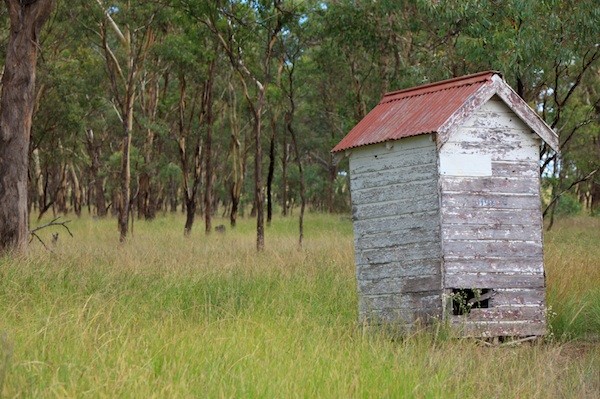Advertisers, especially retail advertisers, have had in-house advertising before John Wannamaker was a boy. Usually these in-house facilities are company owned but occasionally they are implanted into the organisation from external suppliers.
The concept of the in-house advertising production facility has become more attractive to a broader range of advertisers in recent years because of:
- Low cost production technology such as computers, ringers and software
- The increased speed to market compared to most external suppliers such as agencies
- The diversification of requirements within marketing and across the organisation
You see, with the fragmentation of media and the move to a more content driven marketing strategy, advertisers are looking for more cost effective and time efficient ways to meet their marketing communication needs.
Growth in-house
Recent in-house facilities we have reviewed provide services to marketing and beyond within the organisation including:
- Print production including advertising print and collateral
- Video production especially rich web content
- SEO and search marketing services
- Customer & data analytics
- Social media management
- Event management
- Sales and consumer promotions
- Copywriting and editorial
- Internet asset development
- Mobile phone apps
But these in-house facilities are not always seen for the positives they deliver to the organisation or their marketing stakeholders. Often we are asked to investigate and assess the current arrangements and provide a business case or recommendations for change.
How it goes wrong
The reason is that often these facilities can appear to become a cancer within the organisation, consuming resources, head count and budget and becoming difficult and costly to manage.
The problem invariably stems from the way the in-house facility was established. In most cases the original concept was to provide a limited number of services as a cost effective alternative to using external suppliers.
One or more people were employed, usually externally with an agency or design company background, and immediately the demand on the facility grew. The convenience of having the people doing the work on site is appealing, but not as appealing as the fact the service is funded from an internal budget. The people in the team are eager to please, initially, as they see this as justifying their position and securing their tenure.
The growth is usually organic, with no stated strategy or scope and process is devised on the run. Soon there is a need to manage the process with multiple stakeholders across the company now accessing the services due to the convenience and apparent lack of cost. Either one of the team in the facility steps up or a production person externally is now hired.
If it has not happened already, the original facility owner, usually marketing, demands a new funding process as their budget is paying for all the other stakeholders. So now the facility has multiple owners. Marketing still have the bulk of the work but now they no longer feel they are getting the attention they need, with other stakeholders taking priority.
I guess you can see where this is headed or have experienced this yourself at some stage.
Where it went wrong
The problem is that the facility is not another department or business unit, it is a supplier. This is why external implants rarely have this issue, because they are implemented on a commercial basis. But the problem with the built from the ground out model is that usually at no time was there a clear definition of the purpose, the people or the process.
In-house strategy
What is the purpose of the in-house facility? What is the scope of the work to be undertaken? How much work will there be? What are the potential growth plans? How will ROI be determined? What are the key indicators for success? And how will failure of the process be managed?
These are some of the questions that should have been discussed and defined up front before the first dollar was invested. If not, then like a cancer, it can quickly grow out of control. You need to treat this as you would any commercial arrangement and have a very clear business strategy and business model for the facility you are implementing. The reason this is often overlooked is that the starting process is usually in response to a short term or tactical need, rather than a longer term strategic requirement.
If it hasn’t been undertaken in the past, then the starting point is to retrospectively develop a business plan for the facility with the input of all stakeholders, but not the facility employees themselves, who are often too conflicted with maintaining the status quo.
In-house structure
Interlinked with strategy and purpose is structure and people. Who are the stakeholder users and what are their needs and requirements? Who will be able to interface with the facility and who can not? What specialist resources are required and how many? How will they be structured? How will they be managed?
Because these facilities often grow organically based on company need and internal demand, it appears that the number of heads increases uncontrollably. But often there is no clear justification of the roles and responsibilities of these extra resources. That is because as it grows, increased numbers of stakeholders using the facility are not visible to the current users. Having a clearly articulated structure, with contact points and roles and responsibilities is essential.
In-house process
This is not so much the processes of doing the work. After all you would recruit and do recruit people experienced and skilled in the production type. The processes here are more focused on the management of the facility.
How will the organisation keep track of the number and types of jobs being undertaken to manage workflow and define resource requirements? How will the resources be paid for and how will these be valued? How will you ensure the in-house facility is running more cost effectively than an external supplier option?
While many production people will focus on the workflow to satisfy the immediate needs of the internal user, they often overlook the large requirement of managing the workflow process to ensure the strategic requirements. This is because those strategic requirements were often never defined as success criteria and also because an angry colleague who is waiting for their job is more immediate than the larger issue of delivering a high value, low cost service. But by managing the immediate needs of the stakeholders, they are avoiding the longer term issues which, as we see, rises up eventually.
In-house or outsourced?
The desire to build an in-house production facility is a business decision and should always be based on a sound business plan. The key objectives are either cost reduction, speed to market, greater effectiveness or all three. Convenience is often mentioned by users, but this is too subjective to use as a success criteria.
Once you have made the decision, it is worth looking at suppliers who provide these services implanted into your organisation as primarily it becomes a commercial transaction that is easily assessed and does not have the issues of breaching head counts.
If you decide to build the facility yourself then you need a business plan based on the strategy , structure and processes to ensure that at any time you can assess how well it is performing against your strategic requirements.
We are often called upon to review current in-house facilities to determine how well they are performing against non-existent success criteria. We have therefore become adept at retrospectively developing those strategic criteria through working with the stakeholder users and then measuring the performance against this. Often this issue is that inefficiency has been allowed to develop within the in-house facility because cost and time efficiency were not articulated clearly as a measure of success.
What are your views on having these services in-house or not? Leave a comment with your thoughts.





14 thoughts on “Why in-house advertising services work… and why they don’t”
Great post Darren. You make some really valid points and having seen internal advertising services within companies both work and be disastrous, the ones that seem to thrive are those where management have employed a Director/Manager for the in-house 'Department' from the outset. This Director is normally an external hire who is an advertising or design specialist as you say, who takes responsibility for a long term strategic plan, the budget and resourcing. The Department then gets positioned internally as a stand alone unit with a bottom line so everyone getting uber excited about using it understands they will be accountable for hours used and it's not just a free service to use at will. This also stops time-wasters – another potential pitfall for internal services where staff don't properly think through briefs and requests because they think it's all being done for free. And let's face it, what these days is free?
Hi Anita, have you seen many successful systems where they either report on the costs and cost effectiveness to the stakeholder group or even where there is a service charge leveled internally in recognition of the value of the service provided? I would be very keen to understand your experience and views on how the value of the in-house service is articulated in these successful examples.
I definitely agree with Darren's post regarding running inhouse services as legitimate, accountable and valued business units. And I agree with Anita's comments.
Having had hands-on experience on all sides of this discussion (ie: in-house marketer, external agency, external supplier located inhouse and having reviewed various businesses in-house facilities) I too have seen successful and not so successful interpretations of in-house services. Ok, admittedly, I may be bit biased – as I am proud to say I have successfully managed/directed several inhouse print/design/studio facilities and there is no doubt that having a strategic guideline, business plan, formal structure, a logical and creative mind along with agreed tailored processes and procedures, good stakeholder engagement skills and a collaborative team are all mandatory for success.
Setting stakeholder expectations (this may include some training, such as Brief Creation, Process Flows, Accountability etc, particularly with younger stakeholders) and as Anita identifies, is fundamental. It should be prioritised as with an external agency or any other part of the businesses production or manufacturing process.
Interestingly, Darren points out how quickly inhouse facilities can grow – like a cancer.
I've witnessed this several times in various businesses across various services including, social media, data management, internal communications, sales promotions, print and advertising collateral to the extent that internal divisions end up doubling up on services, increasing costs, going over old ground, diverting from the main strategy, being non compliant with brand guidelines, being contradictory in communication etc. The right and left hand end up not knowing what each other is doing because there is no clear structure or lines of reporting/communication. When, or in some case if, it finally comes to light, it’s usually too late and the the business has already expended resources, time and money.
But don’t let this put you off in-house services, it’s simply a matter of communicating with key stakeholders, building a Business Plan, getting the right people in to facilitate the services and keeping control of the outcomes and goals.
Thanks Shirley. With much hands on experience for getting it right, why do you think some companies get it wrong? I would really be interested in your thoughts on this.
Great post Darren. I remember a while back 360 was a one client agency for Commbank (similar I suppose to an in house dept) and we know where that ended up. The Koreans have a similar model (think Hyundai and Samsung.)
You make valid points about structure, processes and people and I think the biggest issue is that the internal departments all see the in house services dept as a "free resource". I've know clients that have in house production to go outside because they can't get the level of attention or quality of work for their needs – and usually due to tight deadlines. Add to that I've also known agencies within large groups who go outside their own group of companies (who provide the services they need) because of cost and accountability.
You're right that the decision needs to be driven by a business case but what about the subjective components of "big ideas" and "production values"? How many internal ad services departments would retouch an image for a print campaign 5-6 times to get it "just right"? Thoughts?
Arun, this is a process management issue that is usually arises because there is no strategy in place in the first place. If the in-house facility has clear roles and responsibilities, then they would be held to deliver against those including cost and quality expectations. But the fact is they largely operate in a vacuum without any objective criteria for success and largely judged subjectively against poorly articulated expectations at best.
I absolutely agree about the mistake of seeing inhouse teams as a 'free' resource! Even the most established creative businesses think this way! I've seen producers run jobs tens of thousands of dollars over budget but not considering the internal time as a cost to their job at all! A business is sure to go broke if this is the case.
Darren: it all sounds very familiar. A few years ago I had the job of reviewing (with a view to closing) an in-house design facility that was seen as an unnecessary overhead. Your scenario had played out exactly as you describe it: no focus, no raison d'etre other than to fulfil the initial vertical marketing need and no investment beyond the initial set up costs. The result was a demotivated (though skilled) team taking work from a wide range of brands and departments in the group but delivering low grade work because 1. that was the only expectation and 2. they had not been allowed to keep up to date with required technology.
A thorough investigation of capability and use/cost of outside agencies secured sufficient investment to upgrade the technology and to run an internal promotions programme geared to a new strategic role in the group saving a significant sum while improving speed to market.
Hi Bob, great to have you comment and participate in the discussion. I am sure if you work in this business for even a few years you see this happen over and over again. I think production, like media, appears so simple and basic from the outside. Just get a few computers a good printer and a couple of people to operate them and all will be sweet. The proverbial 'low hanging fruit', a 'quick win' and we can all go home satisfied that we have saved the company money. And yet installing a in-house facility of any type must be carefully planned and executed. Of course, while people continue to make this mistake, there will always be work for you and me. right?
Great post Darren. To add my 2 cents I've been involved with both in-house teams and outsourced teams. I've seen the in-house team can sometimes become stale as they only ever work on the same work for the same clients.
Whereas a good production company will work with multiple clients on a variety of work that constantly pushes the boundaries.
The smart production agencies take the learning from one client and share the thinking with other clients bringing more value.
Having said that, if you have good leadership in-house with a business plan it would certainly include getting out and about to make sure you stay ahead of the latest workflows.
Mike, thank you for your comment, and yes it is true that external providers invariably have a breadth of experience that comes with working across multiple pieces of business that an in-house facility cannot have except through the recruitment of a highly experienced leader. And this I think is a core issue, that rarely are these criteria considered in recruiting either a leader or their expertise. I am constantly surprised at how the whole process is often allowed to grow organically with no strategic direction or consideration whatsoever. Sure, they are run by 'experienced' people, but often not leaders and rarely production strategic. What do you think drives this failure?
My feeling is that there is a belief that a creative director can direct creative of all types, a producer can project manage and produce anything when in fact there are specialties within each role and certain levels of scale within each. These are just a few examples – the same applies to graphic designers, art directors, content writers and so on. It takes a certain depth of experience to know how to pick the right one and even more so to lead a team to keep developing themselves and the business for a client. Running a creative business, which effectively an in-house team is just that, is a skill that even a lot of creative leaders cannot figure out. There can be very stubborn and stuck people at a certain level and the entire business grinds to a halt with them in the seat.
I think that any creative group can be stuck as @Mike Palmer rightly suggests. That's a lack of leadership, and people who lack commitment to self development and expanding their skills in my experience. Continually asking what the business needs by way of focus on the business plan is a good start.
Because the business gets stuck at the level of the skill of the people there I think there is a compromise for in-house teams and that is to keep in-house the 'grunt' work – the people that do implementation and roll out the regular work but get spikes of input on key projects or to freshen up the approach from time to time with just the right service providers by project basis. Having a consultant creative director, production manager or designer can keep the work strategic and fresh.
To add to all these great comments I'll say that the biggest issues I see are:
– Thinking about the task level only and not the business plan level when deciding what work is done in-house and who does it
– Lack of understanding about the skills of the people there and how their limits equal the business limitations
– Lack of financial accountability – real costs and internal charges not recouped properly
– Complacency: 'We've always done it this way'
– Expecting the team to do more than they are capable
– The wrong individuals for where the business is going and not being able to fire them unreasonably
– Working in silo's. Keeping tasks separate without thinking about the wider brand needs.
– Reactive not proactive
– Lack of creative leadership and thinking constantly about business needs not self comfort
– Boredom and lack of stimulation in a dry environment (many don't respect how important it is for creative people to be in the right culture)
– Lack of creative self development and talent up-skill
– Lack of funding for new software to expand on offering
– Lack of capital for upgrading IT hardware and firmware
– In-House teams only given the 'grunt' jobs and not seen to solve the wider business problems. They can be defined only by the work they do every day rather than what they are capable of.
Great conversation everyone and thank you for your contributions and insights into this. Clearly from your interest and the number of projects and discussions we are having in this space this is a growing issue for the industry.
Comments are closed.